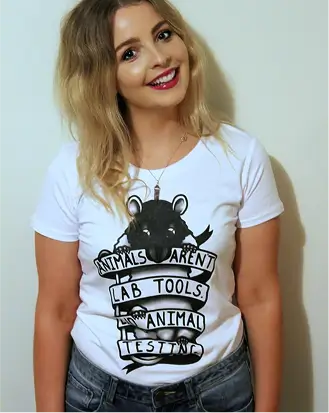Governance and Oversight
In New Zealand, the use of animals for research, testing, and teaching is governed and monitored through a combination of legislation, regulatory bodies, and animal ethics committees.
Legislation
The Animal Welfare Act
The main legislation addressing this issue is the Animal Welfare Act 1999, which is what gives animals in NZ legal protection.1 However, animals used for science are not given the same rights or protections as other animals.
In fact, the part of the Animal Welfare Act that covers the use of animals for research, testing or teaching purposes (part 6) gives exemptions to most requirements in the Animal Welfare Act. This means that animals used for science are left vulnerable and can be used in ways that would usually be considered illegal.
Codes of Ethical Conduct
According to the Animal Welfare Act, to engage in the use of animals for science, anyone can apply to the Director-General for approval of a Code of Ethical Conduct.
Any person or organisation using animals for science must follow an approved code of ethical conduct, which sets out the policies and procedures that must be followed by the organisation and its animal ethics committee. These are enforced by the Ministry for Primary Industries (MPI) and the National Animal Ethics Advisory Committee (NAEAC).
Regulatory bodies
MPI
One of the responsibilities of The Ministry for Primary Industries (MPI) is to oversee part 6 of the Animal Welfare Act, but in practice, they:
- Collate statistics and report on the number of animals used for science each year.2 MPI publishes these on its website here.
- Respond to complaints if/when they are made.
- Review code holders and their animal ethics committees every five years.
MPI also provides information for Code holders and Animal Ethics Committees; for example, they publish a Good Practice Guide and a template for a Code of Ethical Conduct.3
Approximately 300,000 animals are used for science each year in New Zealand. That means around 1.5 million animals will be used per 5-year audit cycle. Do you think this is enough to ensure animals are protected? Because we don’t!
NAEAC
Animal Ethics Committees are overseen by the National Animal Ethics Advisory Committee (NAEAC).
NAEAC is appointed to provide independent advice to the Minister of MPI, MPI, the Director-General, AEC's and others relating to the use of animals in research, testing and teaching.
NAEAC also attend a limited number of animal ethics committee meetings each year where they check on the implementation of the 3Rs principle (the replacement, reduction or refinement of animal use), you can find out more here.
In cooperation with the Australian & New Zealand Council for the Care of Animals in Research and Teaching (ANZCCART), NAEAC presents an award based on the 3Rs every other year.5
Animal Ethics Committees
Animal ethics committees (AEC's) have the most power over the use of animals for science in NZ. The NZ Government leaves it up to these committees to approve and monitor the use of animals for research, testing and teaching.
Remember that the committees are appointed by the organisations using animals – they are not appointed by an independent governing body.
There are approximately 25 animal ethics committees in NZ, and they run independently of one another under the governance of NAEAC.
Some institutions operate more than one AEC but most organisations engaging in research, testing, or teaching involving animals use another institution’s AEC rather than forming their own.
People can apply to use animals for a specific project by filling in and submitting an application to an animal ethics committee. These applications include what individuals want to do with the animals and why. The format of applications is not the same for each animal ethics committee so not all committees are asking for or considering the same things.
Each animal ethics committee consists of at least four members, including:
- ·A senior member of the organisation.
- A nominee of an approved animal welfare organisation (the only such approved organisation in NZ being the SPCA).
- A nominee of the New Zealand Veterinary Association.
- A layperson nominated by a local body.
However, ultimately, it is the organisations using animals for science that assemble their AEC - the organisation’s chief executive appoints the AEC members.
- https://legislation.govt.nz/act/public/1999/0142/latest/whole.html
- https://legislation.govt.nz/regulation/public/1999/0392/latest/whole.html
- https://www.mpi.govt.nz/animals/animal-welfare/animals-research-testing-teaching/
- https://www.naeac.org.nz
- https://www.naeac.org.nz/the-three-rs/innovative-veterinary-science-teaching-and-research-platform-wins-national-award





